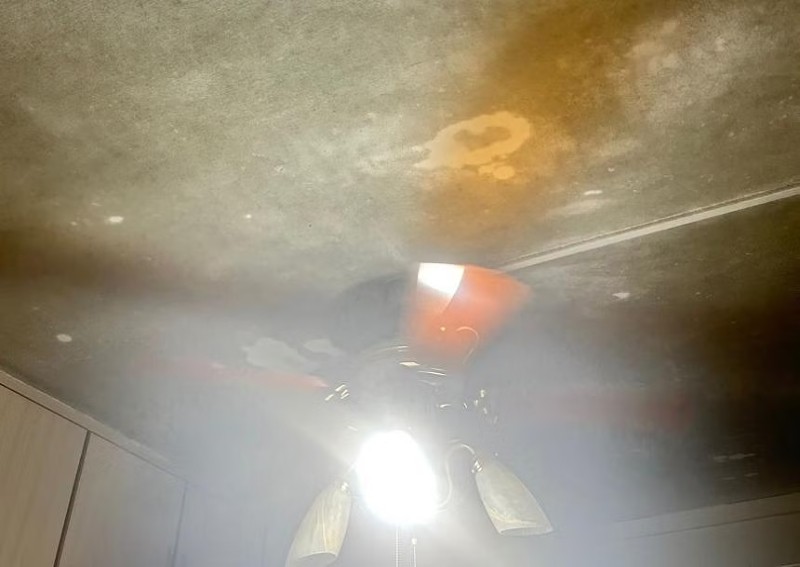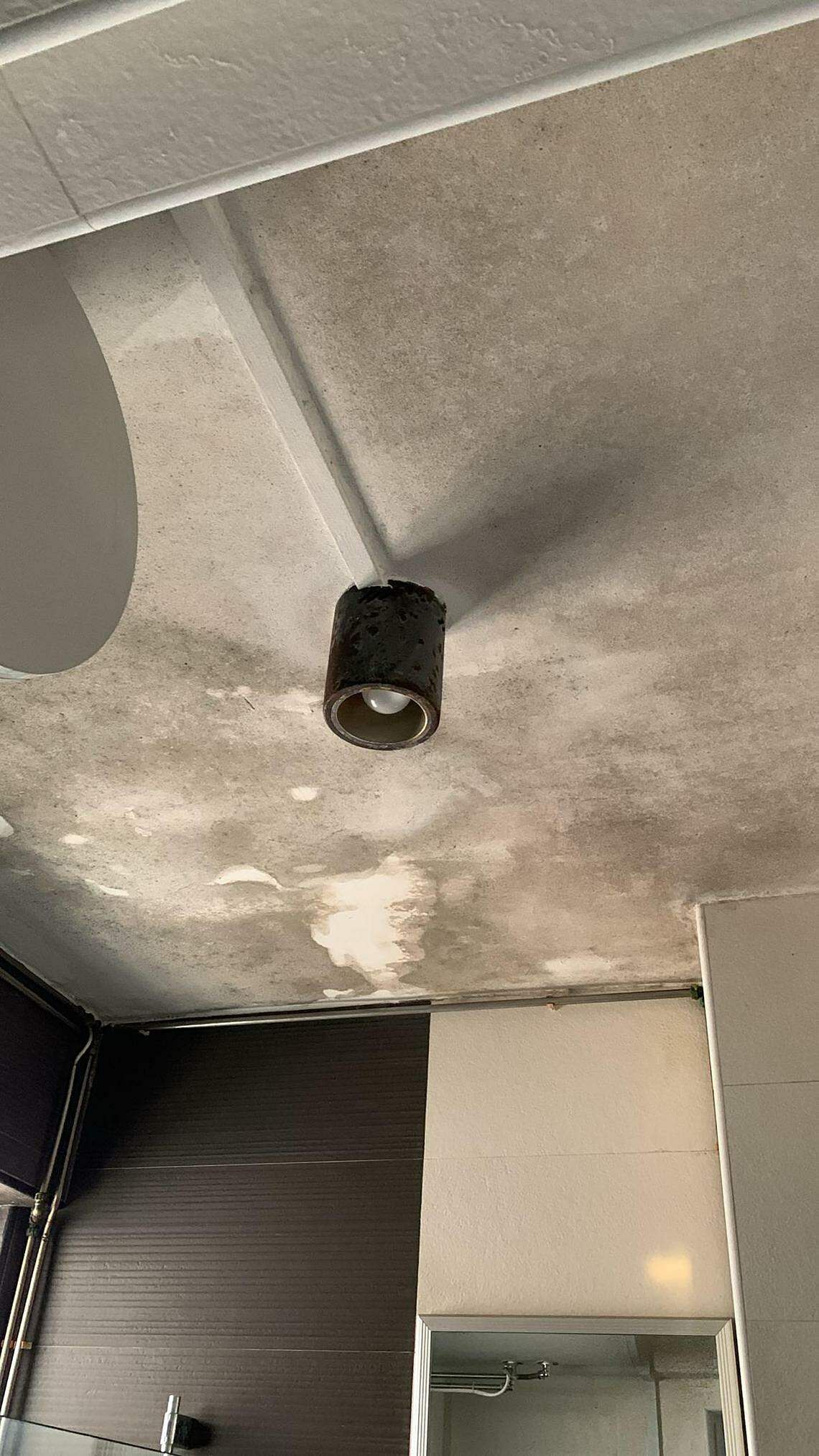'Big fungal blooms in people's homes': Mould cases on the rise during rainy season


SINGAPORE — Rats are not the only ones wreaking havoc this rainy season — mould has been making an appearance in homes, from furniture to ceilings and walls.
Three mould removal companies The Straits Times spoke to saw a surge in the number of inquiries since the start of December, attributing the rise to higher humidity due to the frequent heavy showers.
EcoSense saw an estimated 40 per cent increase in inquiries since the second week of December, said its director Thomas Lou, 38.
Andrew Mantle, 56, sales manager and leading inspector of Mouldgone, said that inquiries rose about 47 per cent since the start of December.
James Chua, 39, owner of Mold Medic, said the business received 10 times the number of inquiries from the start of December, and the number of cases it took on increased from 35 in November 2023 to 97 in January.
Even without the recent downpours, Singapore is a haven for mould.
As mould requires a relative humidity of above 60 per cent to grow, said Chua, Singapore’s average relative humidity of 82 per cent creates a conducive environment for the fungi to thrive.
The situation is exacerbated when prolonged periods of rain pushes relative humidity to 100 per cent, which means the air is fully saturated with moisture.
"We’re going to places we’ve not been to in the past," said Mantle. Before the rainy season, he said that cases were mostly in areas near water like Punggol due to higher levels of moisture in the air, but during this period he is going "all around the island".
[[nid:612827]]
The severity of cases has also increased. Mould growth that used to be confined to bathroom ceilings now extends to entire bedrooms, living rooms and hallways, he added.
"Mould is able to replicate itself every 12 to 24 hours, so we’re getting these big fungal blooms in people’s homes and workplaces," said Mantle.
Mould’s primary purpose is to break down organic matter such as dust on walls and organic material found in some types of paint, therefore damp walls are able to support large mould growth.
When Zahir Latif, 39, and his fiancee returned home from a three-week holiday in early January, they found mould spread across his wooden shoe cabinet and doors.
"When we came back and noticed the mould on the shoe cabinet, we had to deal with it immediately because we have four cats," said the user experience designer. His cats were at home with a cat-sitter during those three weeks and he was worried that they could have ingested the mould and might fall ill.
Non-wooden belongings were not spared. Mouldy white patches were soon found on his mousepad, caps and the leather on his headphones.
He believes that the mould exacerbated his fiancee’s eczema, causing her skin to feel drier and more itchy.
Mould releases allergens that are harmless to most people, but can trigger allergic reactions like itchy skin, wheezing, runny nose and asthma in others, said Dr Loh Jia Tong, 35, an assistant professor from Nanyang Technological University’s School of Biological Sciences.
"When we inhale these particles from the mould, they will enter our respiratory tract. In predisposed individuals, their immune systems will overreact."
This can manifest as asthma or allergic rhinitis, an inflammation of the inside of the nose. If contact is made through skin, it can manifest as eczema, Dr Loh said.
Children and the elderly are also more susceptible to mould’s effects.
As children have immature immune systems, they are more prone to developing allergies in a mouldy environment, while the elderly suffer more serious symptoms such as more severe asthma attacks, Dr Loh said.

"The best thing you can do is to run a dehumidifier and run it daily," said Mouldgone’s Mantle. "There is no point running a dehumidifier in a room once a week or once a fortnight."
Electric dehumidifiers should be run for an hour or two in an enclosed room every day, he added.
Another way, Lou said, is to let sunlight enter rooms as ultraviolet rays can eliminate airborne pathogens like mould.
UV-C, one of three types of ultraviolet rays found in sunlight, penetrates the cells of mould and damages its DNA, preventing it from reproducing. Therefore, leaving curtains open before travelling is a good idea.
Keeping homes, especially in areas such as bathrooms and kitchens, well-ventilated can also help prevent mould, as the accumulated moist air in these areas can escape.
Homeowners can leave fans turned on when they are going away for some time, said Mantle. As mould thrives in still air, improving the airflow will stop it from growing.
For homeowners whose air conditioners can be remotely controlled through mobile applications, Chua suggested turning them on for two hours daily to reduce air moisture and improve airflow.
Mantle also advised storing leather goods and clothes that are not worn often like winter jackets in vacuum sealer bags and regularly opening and resealing the bags.
It also helps to place moisture absorbers in cupboards and wipe wooden furniture with antifungal products when cleaning.
White vinegar is a popular home remedy. However vinegar with acetic acid levels that are too low is ineffective, especially when it is diluted with water, according to Mantle.
Compared with white vinegar, which typically contains five per cent acetic acid, cleaning vinegar with six per cent acetic acid would be more effective.
To remove mould from expensive leather products, consider getting a professional to do it, instead of using vinegar or baking soda — this will minimise the risk of damage to the leather. For non-leather bags like sports bags, Mantle recommended applying fungicides. Off-the-shelf fungicides include bleach-based products.
However, where mould growth is extensive and found in areas difficult to reach such as ceilings, Chua suggested consulting mould removal specialists.
Specialists use different methods to remove mould.
Anti-microbial misting is one method they use to eliminate mould in the air or hidden within walls. Disinfection machines that emit intense UV-C rays are also used. A coat of anti-mould paint is also commonly applied to prevent mould from reappearing.
This article was first published in The Straits Times. Permission required for reproduction.